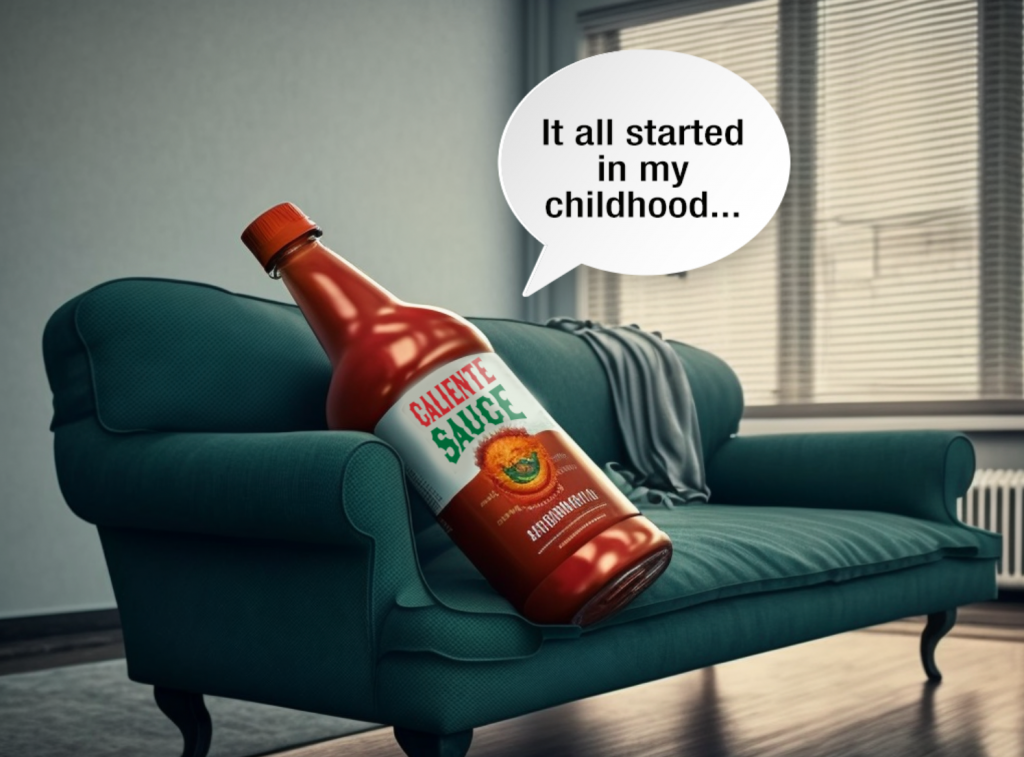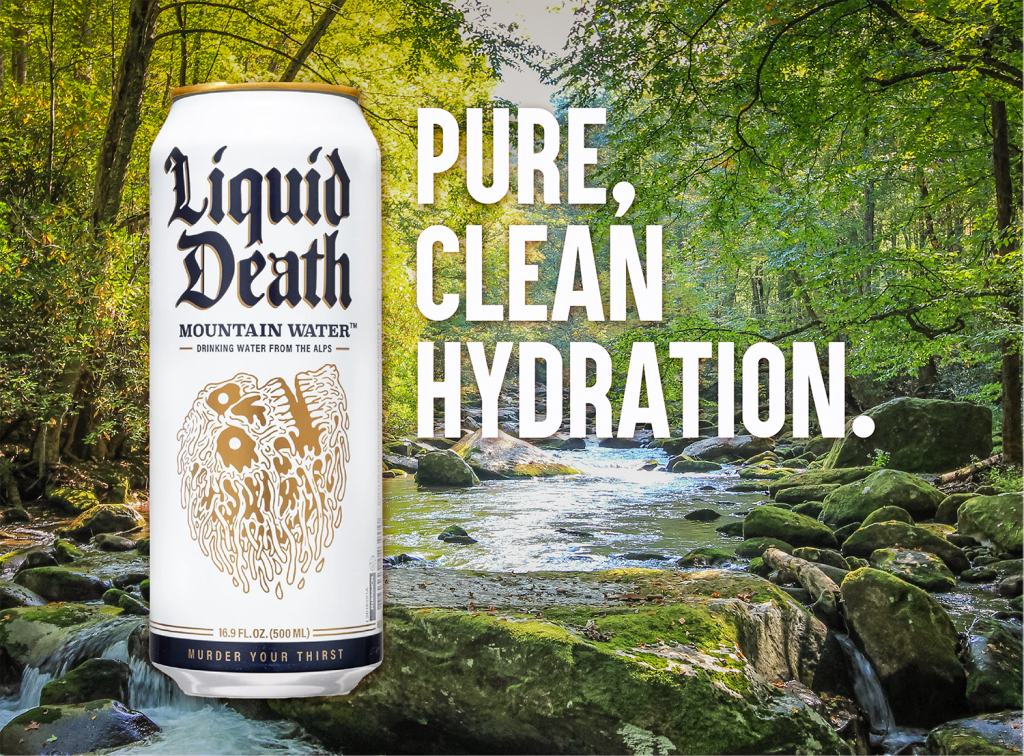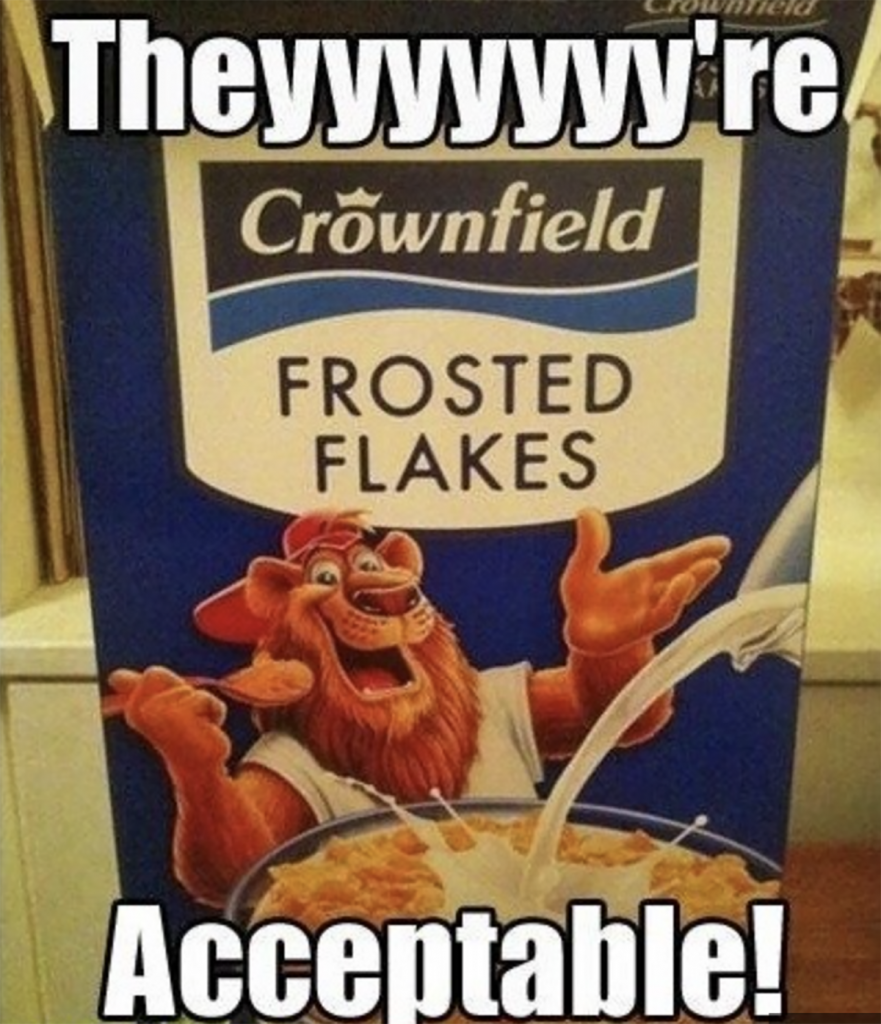
And actually, the solutions are the same.
Brands are just like people, they say! While I tend to disagree with this sentiment, we do sometimes project our issues onto our own beloved brands. I understand why marketing teams want their brands to feel as human as possible–giving them robust personalities and unique voices. After all, people do business with people. But some problems can really affect consumer perception–and ultimately–your long term success.
So here’s a little self-help for you and your brand. Come into my office, take a seat.
1. You try to do it all.
I get it. Your brand is gluten-free, low sugar, keto-friendly, vegan, no additives, organic. You want to be premium, but accessible to all! You want to appeal to a rugged outdoor lifestyle but one of your sales channels is fancy hotel boutiques. The allure of telling the consumer ALL the things and appealing to ALL the people is compelling. And your product is ahhhhmazing. So, what’s the problem?
The more things you say, the less people hear. The more things you try to do, the fewer things you end up doing well. Your brand can’t do everything, and the more you try to take on, the more divided your focus becomes (and the weaker your messaging becomes).
If you are a human person, I’d bet money that you have this problem too. I know I do. As a mom of two with a busy career and a bunch of hobbies I’m passionate about, I often find my attention split. Is it even possible to keep an influencer-level clean house, send the kids to school every day with perfectly crafted organic bento box lunches, perform at a high level at work, spend quality time with loved ones, go on 2.5 date nights per month, train for a marathon, AND brush your teeth? I sure wish it was. But this is a perfectionist fantasy–one that many of us really, really think we can achieve.
You know what happens when we try to do too many things well? We do all the things half-assed. We’re miserably mediocre.
The reality is that all of us have to choose. If we don’t choose, life will choose for us. What are the most important things? What aligns with our values? What is most aligned with our personal mission in life or vision for the future? Pick those things. Do them WELL. Excel at them! Be known for those things.
And here is the surrender: be mediocre at the rest. Some things you may give up entirely. Some you may delegate. (Sidenote: I have totally given up on the homemade lunches and the clean house, but I am pretty great at making my kids laugh and snuggling with them at night. I’d rather be remembered for that.)
OK, back to your brand. Have you looked at your vision, mission, values? What aligns most with that? Which consumer would be best served by your brand? Choose them and ignore the rest. What resonates the most with them? Do that, and do it well. Your brand can’t be great at everything. Once you figure out what your priorities are, go deep on that. Then you’ll be the BEST at something, instead of just mediocre at everything.

2. You change your personality to suit different groups.
The desire to be all things to all people goes deep. You want your brand to appeal to millennial moms and young bros who work at Google and–hey–kids would love it too! Maybe all of these folks WOULD love your brand! But if you target everyone you’ll have a generic, diluted message–not unique, authentic, and emotionally connective. And if you change your message from audience to audience to capture more people, you lose credibility.
First, pick your target.
Make it narrow and specific. By choosing a niche, you can better understand the consumer’s needs and specifically address them in a voice and style that resonates with them the most. This creates a deep connection, builds trust and loyalty, and helps your brand establish a personality that is unique and differentiated–not vague and for the masses.
Then, be consistent!
We all do a little bit of shapeshifting, of course. I am “agency-owner Kelly” and “friend-who-uses-too-many-curse-words Kelly” but the older I get, the less caught up I am with how I’m perceived and the more those two Kelly’s merge into one. You know who I want to hang out with? Someone who is authentically them, all the time. Someone who is consistent and reliably themselves. I tend to avoid people who change personalities in different scenarios. Those interactions feel awkward at best, deceitful and manipulative at their worst.
Your brand shouldn’t adapt its persona either. Be consistent across all touchpoints, to all people. Today’s consumer is on the lookout for disingenuous brands. They want authenticity, reliability and honesty. Imagine if Liquid Death water changed their slogan “Murder your thirst” to “Pure, clean hydration” while marketing to a different demographic? It would dilute the brand and confuse consumers, leading to a loss of trust and loyalty (and ultimately, sales). Plus, they’d lose the best part about their brand–the badass unapologetic personality that drives their success.

3. You struggle with big decisions.
Big decisions are the worst, even for the most decisive of us. Decision fatigue is real, and CPG founders and marketers certainly fall prey to it. Did you know there’s an easy life-hack to making big decisions, personal or business? Values.
There’s a reason why almost every brand positioning exercise asks you to outline your brand values. Values are a guidepost for decision-making. They help you prioritize what is most important and make choices that align with your beliefs and goals. When a big decision comes up, consult your brand (or personal) values and ask yourself which outcome brings you closer to these ideals? That can help guide your brand in a more authentic direction, and bring much-needed clarity.
Prioritizing your values in your decision-making for your brand helps position you to create products that best align with your consumers beliefs and preferences. As an individual, aligning your decisions with your values makes you feel fulfilled and purposeful–supporting your long term goals instead of reacting to immediate circumstances. In this way, your decisions can be more informed and intentional, less reactive.
4. Your wardrobe is outdated but you don’t realize it until Gen Z points it out.
Ok, just me? My preteen daughter has no problem telling me my outfit is “dated” (but she’s wearing throwback clothes from the early 90s? I digress). Maybe you’re a fashion micro-influencer and don’t relate to this at all. But your brand probably does.
Let’s face it: you need to look at your product packaging and branding at least every 5 years. Your “ahead-of-the-times” design becomes just one among many a few years later. That’s how it is with design trends. If you’re a food or beverage brand, you definitely do not want to look dated. Nothing quite as unappetizing as an “old” looking brand on the grocery shelf.
So how do you know? Like my preteen daughter, maybe some brave consumer told you. Maybe sales dipped, or engagement dropped. Maybe you noticed that your category has become homogeneous, filled with similar products wearing a similar wardrobe, and you want to stand out? Or, worse, everyone else on your shelf has modernized, leaving you behind.
You don’t have to be the first to wear it (although being a trendsetter gives you some clout), but you don’t want to be the last to wear it, either. So please ditch the old look before someone makes a meme out of you.

Get it together!
Your brand is not so different from you–both are imperfect, ever evolving, learning as you go. Focus on what is really important, maintain an authentic consistent personality, use your values to make decisions, and embrace change to stay relevant.
By adopting these principles, your brand can become more focused, authentic, and engaging. Remember, the world doesn’t need one more jack-of-all-trades generic brands for “everyone”. The world needs your specialized, niche, absolutely expert, values-driven brand.
– Kelly
Check out our Food & Bev Brand Bootcamp for all your DIY branding needs.

